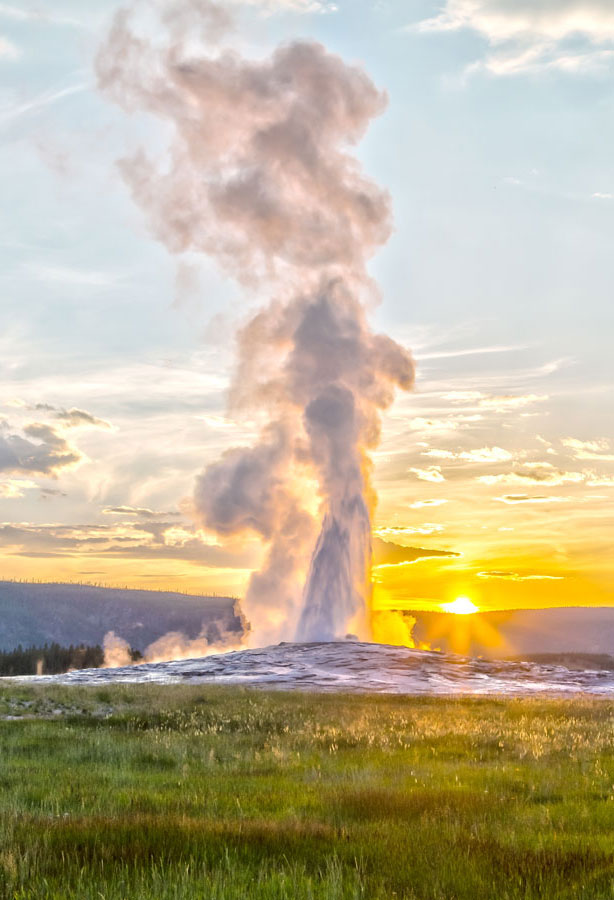Often, the stories behind the names of America’s most famous landmarks are just as fascinating as the sites themselves — because not every name is as straightforward as the Lincoln Memorial or the Washington Monument. From the surprising figure who inspired the name of Mount Rushmore to the original, full name of the Statue of Liberty, discover the stories behind the names of 10 iconic U.S. landmarks.
Alcatraz Island – San Francisco, California

Alcatraz Island didn’t always hold the most infamous prison in the United States. In 1775, when the Spanish explorer Juan Manuel de Ayala first sailed into San Francisco, he named the three islands Isla de Los Alcatraces. Over time, the name was shortened to Alcatraz, which translates to “pelican” or “strange bird.” After the island became the site for the country’s most isolated federal prison years later, it earned the nickname “The Rock” due to its remote location in San Francisco Bay and for the way the island juts prominently out of the water.
More from our network
Daily Passport is part of Optimism, which publishes content that uplifts, informs, and inspires.
Mount Rushmore – Black Hills, South Dakota
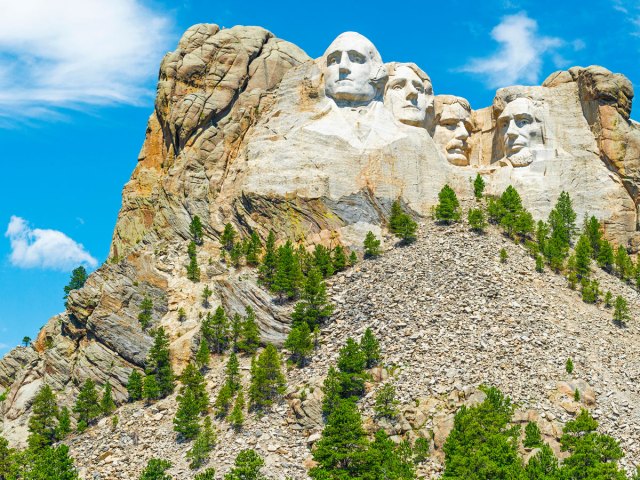
The iconic mountain that bears the giant stone faces of four U.S. Presidents is named after a lawyer from New York. In 1884, Charles E. Rushmore was sent to the Black Hills in South Dakota to secure land for tin mining (on lands considered sacred by the Lakota Sioux). He spent many weeks exploring the area with guides, and at one point, he inquired as to the name of an impressive peak nearby. Since the mountain had no name, a prospector with him replied, “We will name it now, and name it Rushmore Peak.” From then on, it was referred to as Rushmore Peak, Rushmore Mountain, or Rushmore Rock. When the national memorial was finished in 1927, it officially became known as Mount Rushmore.
White House – Washington, D.C.

Although it may seem obvious as to why the presidential mansion is referred to as the White House, there’s more to the story than the paint color. Before President Theodore Roosevelt began calling his residence the White House in 1901, it was more often referred to as the “President’s House” or the “Executive Mansion.” However, since the homes of U.S. governors were also called executive mansions, Roosevelt named his home the “White House” in order to distinguish it above all others. The house’s color resulted from a lime-based whitewash that was applied in 1798 to protect the exterior from cracking.
Cloud Gate – Chicago, Illinois

Although it’s most commonly called “The Bean,” in reference to its distinctive shape, the actual name of Chicago’s most famous sculpture is Cloud Gate. It was unveiled in Millennium Park in 2006 and has since become one of the city’s most popular attractions. Designed by British sculptor Anish Kapoor, Cloud Gate remains his most famous work to date. Although the piece is magnificent, the name is deceptively simple: Kapoor chose Cloud Gate for the clouds that can be seen in the sculpture’s reflective surface and for the way the curved underside serves as a gate to the park.
Devils Tower – Black Hills, Wyoming
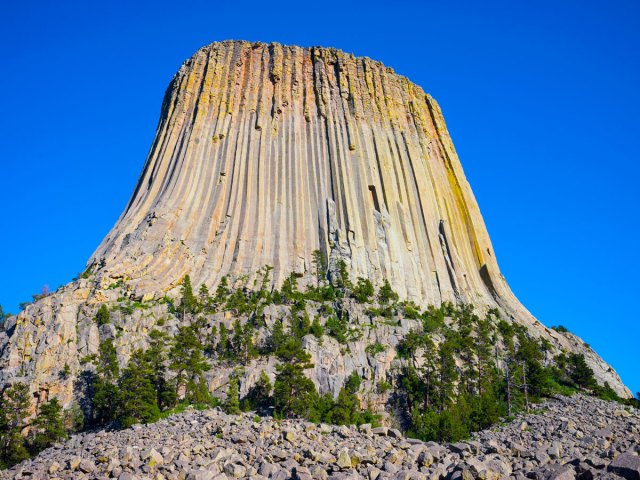
Devils Tower is an impressive rock formation that stands 867 feet high above the Black Hills of northeastern Wyoming and is considered sacred by Indigenous cultures. When settlers first arrived in this part of the country, the rock was labeled on maps as “Bear Lodge,” a translation for the common Lakota name Mato Tipila. However, the name changed when Colonel Richard Irving Dodge led a geology and mapmaking expedition to the site. Dodge wrote that the Indigenous people called the place “bad god’s tower,” which eventually led to the adoption of the name Devils Tower. However, this is believed to be a bad translation, as no records have ever shown that Native Americans considered the tower to be associated with evil spirits.
Statue of Liberty – New York, New York

The Statue of Liberty has long stood as a symbol of freedom and hope for U.S. residents and newcomers, but when first built, Lady Liberty went by a different name. Designed by the French sculptor Frederic-Auguste Bartholdi and gifted from France to the U.S. in honor of the centennial celebration, the Statue of Liberty was originally entitled “Liberty Enlightening the World.” The 305-foot statue was unveiled on Liberty Island in New York’s Upper Bay on October 28, 1886, but eventually the statue’s lengthy title was dropped in favor of the simpler “Statue of Liberty.”
Golden Gate Bridge – San Francisco, California

Easily San Francisco’s most recognizable landmark, the Golden Gate Bridge is named not for its reddish-orange hue but rather for the body of water it crosses, the Golden Gate Strait. The mile-wide strait, which connects San Francisco Bay and the Pacific Ocean, was named in 1846, a few years before the California Gold Rush. It was at this time that the explorer John C. Fremont came across the strait and recalled the Golden Horn of the Bosporus in Constantinople (now Istanbul). He named the strait the “Golden Gate,” translated from the Greek word Chrysopyla, in honor of another body of water halfway around the world.
Hoover Dam – Arizona/Nevada

Before it was officially declared the Hoover Dam, this marvel of modern engineering went by a few different monikers. Originally, it was known as the Boulder Canyon Project, which changed to the Black Canyon Project when the location was moved. It was then referred to as the Boulder Dam on legislation, and many assumed that to be the official name until the Secretary of Interior declared it the Hoover Dam in honor of the acting president, Herbert Hoover. The new name was controversial since Hoover was incredibly unpopular at the time due to the Great Depression. It wasn’t until 12 years later that it formally became the Hoover Dam, after a House Resolution passed to certify the name.
Old Faithful – Yellowstone National Park, Wyoming
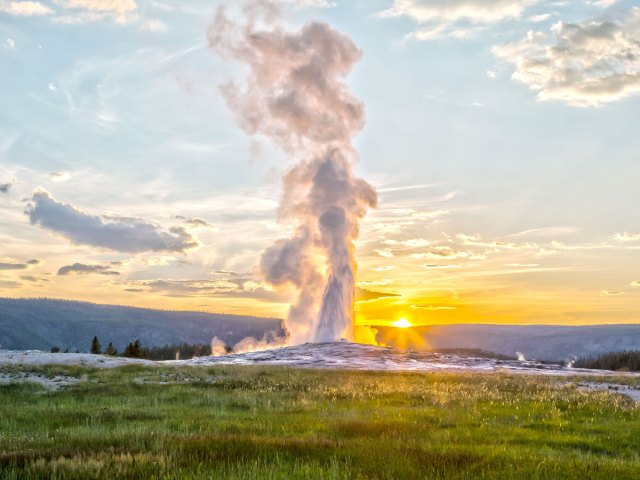
Located in America’s first national park, Yellowstone, Old Faithful draws around 4 million visitors annually. The powerful geyser was named by the members of the Washburn Expedition of 1870, who discovered that it erupted with reliable regularity. It was the first geyser to be given a title in the park, and the nickname stuck — today, the geyser still erupts every 91 minutes. As for Yellowstone National Park itself, it was named for the Yellowstone River, which runs through the park and flows into Yellowstone Lake. The Yellowstone River’s first incantation was Mi tse a-da-zi, which translates to “Yellow Rock River” in the language of the Minnetaree people.
Liberty Bell – Philadelphia, Pennsylvania
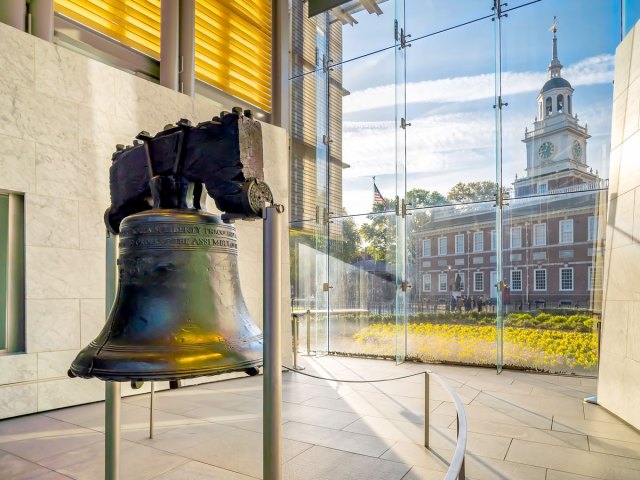
Although the famously cracked bell is widely known as a symbol of independence, Liberty Bell wasn’t always its name. After it was cast in London and hung in Philadelphia’s State House, it was originally referred to as the “State House Bell.” It was rung on July 8, 1776, to celebrate the first public reading of the Declaration of Independence, and it later became a powerful symbol of the anti-slavery movement in the 1830s. With an inscription bearing the motto, “Proclaim liberty throughout all the land unto all the inhabitants thereof,” the iconic landmark represented the ideal of freedom to the abolitionists who coined the name Liberty Bell.
More from our network
Daily Passport is part of Optimism, which publishes content that uplifts, informs, and inspires.






